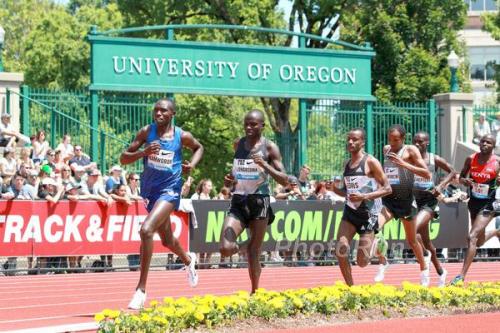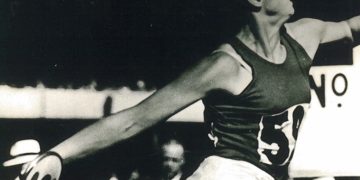The announcement that the Diamond League will be cutting out the 5000m of their official programming has not been welcomed by many groups within the sport. This is Justin Lagat’s comments on the changes, giving us a pretty good feel of how Kenyan athletic fans consider the decisions.
 Geoffrey Kamworor, photo by PhotoRun.net
Geoffrey Kamworor, photo by PhotoRun.net
The scrapping the 5,000m/10,000m races from the IAAF competitions and the practical aftermath:
Beginning next year, the 5,000m and 10,000m races will no longer be featured in the IAAF Diamond League meetings, according to a decision made by the IAAF governing council.
The decision that came shortly after IAAF Tweeted that Kenyans have won over 40% of all titles in the long distance races and the Olympic qualifying standards of the two events being elevated to almost unattainable times, was allegedly meant to provide a better TV coverage of the meetings.
Below are what I think will most likely be some of the practical results of this decision.
1. Kenyans and Ethiopians will start dominating the short track events as well
With no more chances to appear at the IAAF diamond league races in the 5000m/10,000m races, Kenyan athletes will most definitely switch their focus to the shorter distances and will soon dominate them as well. The only reason why they have not been doing so is because very few athletes currently train for such events in these countries.
So, if the move to scrap the distances was, directly or indirectly, based on the nationalities of those who win them, then more events will have to be scrapped in the near future as well.
A man and his son were taking a bull to the market one day. They had a rope tied to the aggressive bull so that it would be easier to guide it in case it tries to run back home. On the way, they found a young boy who was also heading to the market. The man mischievous man who did not want any harm to befall his son decided to hand over the rope to the young boy they met on the road, asking the boy to tie the rope on his hand so that the bull will not escape.
The man’s son heard that and quickly decided to take the rope and tie it on his own hand. Before his father could realize what was going on, the bull pulled the rope and the son’s hand was broken. The plan was meant to hurt the other innocent boy but it ended up hurting the man’s son!
2. Track and field athletic fans will decrease in number
Different people attend a meeting to watch different events. Some are interested in the high jump, others in the sprint events while others are interested in the distance races.
Obviously, if the distance races are removed from the diamond league meetings, then a third of the fans will lose interest in the meetings.
3. Less people will be motivated to join running
Long distance events appeal to many noncompetitive runners given the nature of training that do not need anything more than a trail path to start training. These runners will feel more connected to the sport of running as they will be comparing their paces with those of the elite runners besides the fact that they also have the chances to participate in mass 5km and 10km races.
The move to cut out the distance races will be tantamount to disconnecting the largest group of runners (over 90% of all runners in the world) from feeling part of the IAAF. Some runners may lose the motivation to keep training.
4. Mass exodus from track to the road races
It has already been happening since the 10,000m races became extinct. Most runners have been moving to the roads in order to find opportunities to make use of their talents. Now with IAAF shunning the 5,000m as well, why would any talented athlete bother with track anymore?
5. Any future decisions made by the IAAF council will always be scrutinized with suspicion
A day will come when the IAAF will want to scrap off the 1500m and the 800m for the TV as well, or to change the diamond league races to bi-annual meetings and more people will begin questioning the real reason behind such decisions.
Not only that, but even some past decisions like the changing of the world cross country race to a bi-annual event and some other double standards that might have been applied in dealing with athletes might re-surface.
Author

Since 2013, Justin Lagat has written for RunBlogRun. His weekly column is called A view from Kenya. Justin writes about the world of Kenyan athletics on a weekly basis and during championships, provides us additional insights into the sport.
View all posts




















